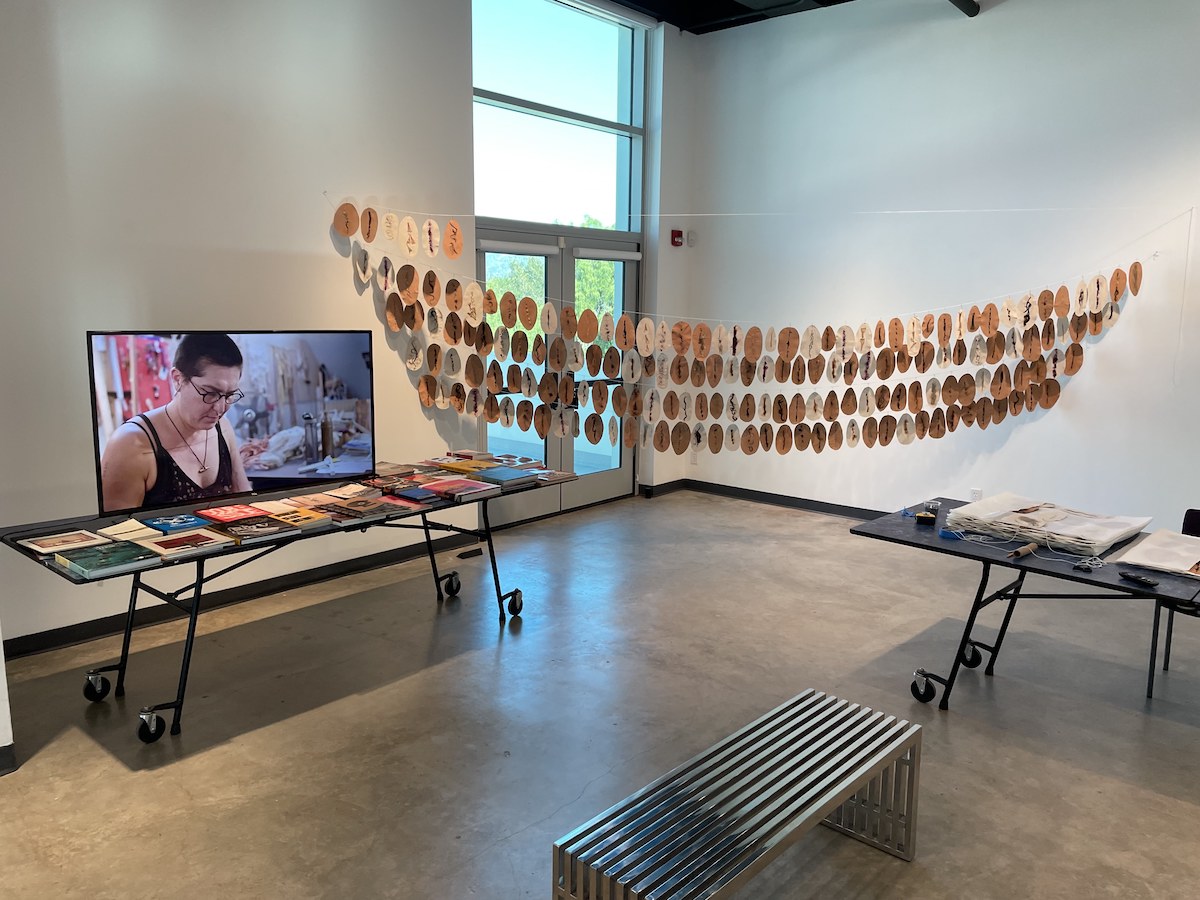Review | ‘Cosmovisión Indígena Art Lab 2.0’ at Santa Barbara City College
Porfirio Gutierrez and Tanya Aguiñiga at SBCC’s Atkinson Gallery

For the run of Cosmovisión Indígena Art Lab 2.0, which closed on Friday, February 18, SBCC’s Atkinson Gallery looked like a workshop. By initiating an active conversation with artists Porfirio Gutierrez and Tanya Aguiñiga, the Atkinson Gallery demonstrated exemplary allyship with this show. Gutierrez forages and harvests insects and plants to make his dyes. Videos in the gallery showed him squashing the red out of hundreds of cochineal insects. The fact that he can find the same materials in California that his parents, grandparents, and great-grandparents found in Oaxaca demonstrates how border-agnostic traditional craftsmanship can be.

Gutierrez’s roots are indifferent to lines drawn on maps. They’re mobile because his raw material — nature itself — is mobile. Nature, indifferent to the conceptual lines of nations, is forever expanding and redefining the identities of those who embrace it. Gutierrez’s practice reminds us that the colors we wear once crawled into cactuses or thrived as flowers in fields. He urges us to ask an important question: What rituals from your childhood have been lost, and why?
Rituals and traditions often go extinct due to convenience. Technology constantly endeavors to save us time. Yet some things are worth the time lost doing them. They don’t waste time but rather transmute it into a higher form. Traditional crafts take longer because they incorporate heightened care and attention — some might say, love. They contain a message from our elders. “Here’s what we did with our time,” or, in other words, “Here is the meaning of life, as we understand it.” Here’s our recipe for survival.
Tanya Aguiñiga practices her rituals of survival in Tijuana. In an Art21 video that was displayed in the gallery, we see the artist hugging a pillar of a wall that extends into the ocean. She holds the rusting metal so close that it leaves a mark on her white t-shirt. Then we see that t-shirt hanging in one of her exhibitions.
Sign up for Indy Today to receive fresh news from Independent.com, in your inbox, every morning.
In “metabolizing the border,” Aguiñiga wears huarache sandals made of glass that are designed to break as she walks. Thus she asks how our bodies survive institutionalized violence. Aguiñiga shakes viewers’ souls with her paradoxical studies of the violence of intimacy on the one hand and the intimacy of violence on the other. The work she exhibited at the Atkinson is a stunning collision of both. The strands of Abaca hemp she hung in the gallery contained hair — hers and her daughter’s — and bones. That is a violent extraction. And yet, shaped like vulvas or ovals, their aesthetic is also soothing and welcoming.
A few months ago, I picked up a book by Mikhail Naimy, a Lebanese writer and philosopher. Naimy writes in formal Arabic but often slips some Lebanese dialect into his characters’ expressions. The silliest conversations — an old lady berating her missing chicken, a pier worker bragging about his calves — jerked tears out of me. As a writer who grew up in Beirut, I had noticed a while ago I was struggling to piece Lebanese sentences together when speaking to my mother. I needed to relive my nation through my mother tongue.
Walking through Cosmovisión at the Atkinson, I realized that preserving such traditions allows us to cultivate the human connections that define us. Gutierrez and Aguiñiga are rewriting the story of immigration and transforming it from loss into an expansion of our aesthetic universe. It is a sort of conquest that implies a profound, essential irony for those of us whose countries were once conquered and colonized. A new ritual is born, one tasked with tracing new lines — orthogonal to all borders — that rekindle and perpetuate our portable roots, revive the colors of our origins, and sound the songs of our loved ones.
Support the Santa Barbara Independent through a long-term or a single contribution.




You must be logged in to post a comment.